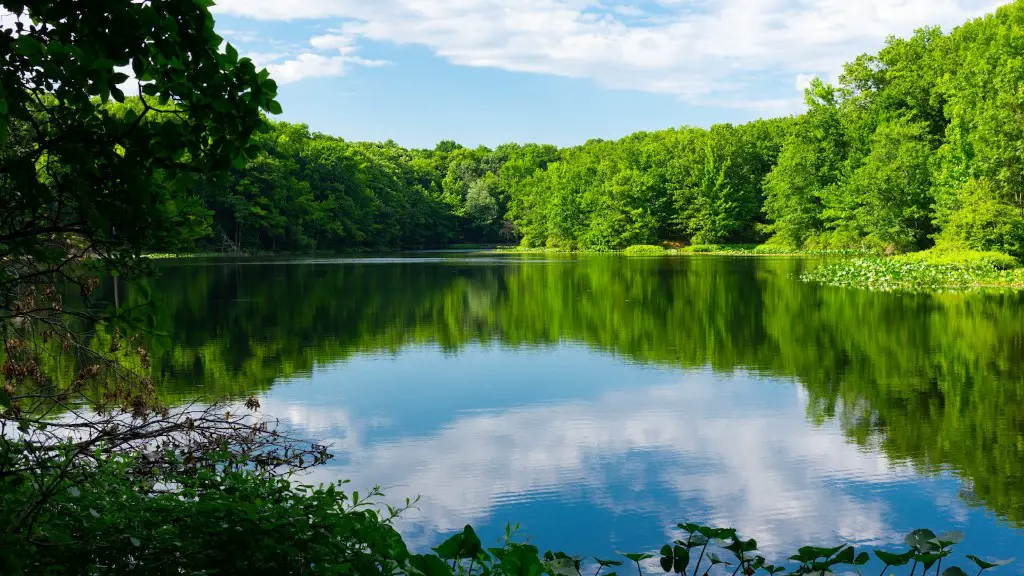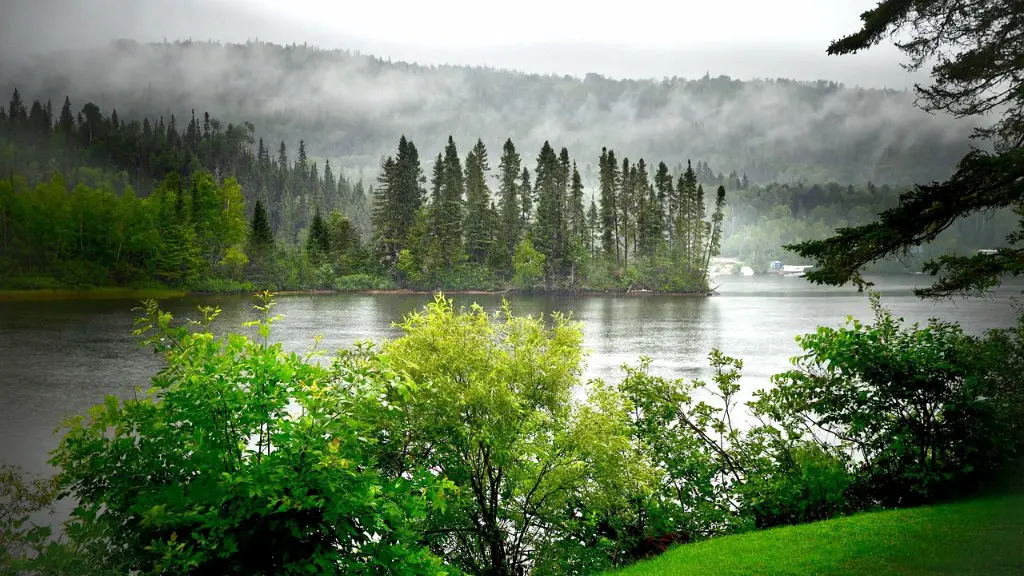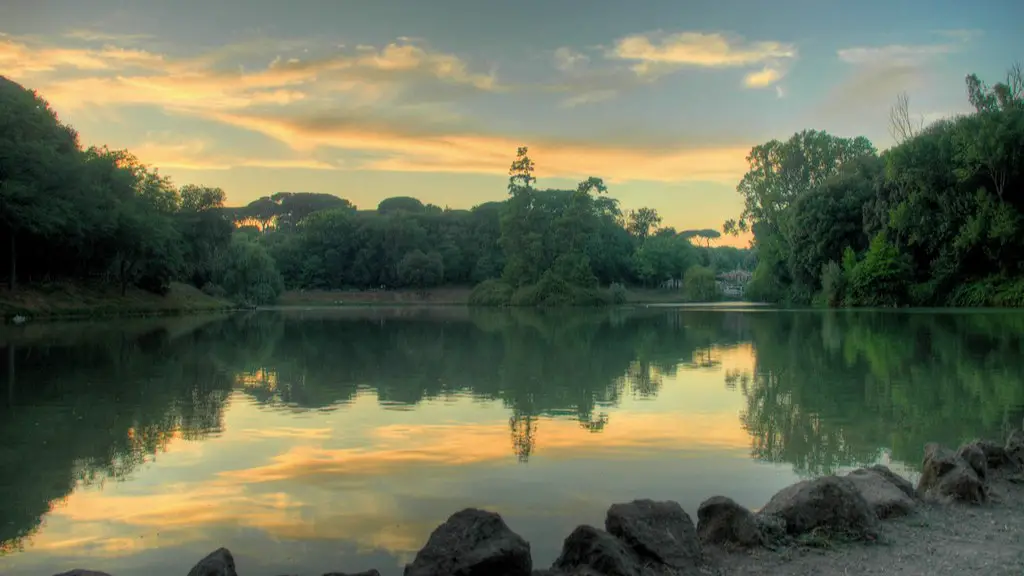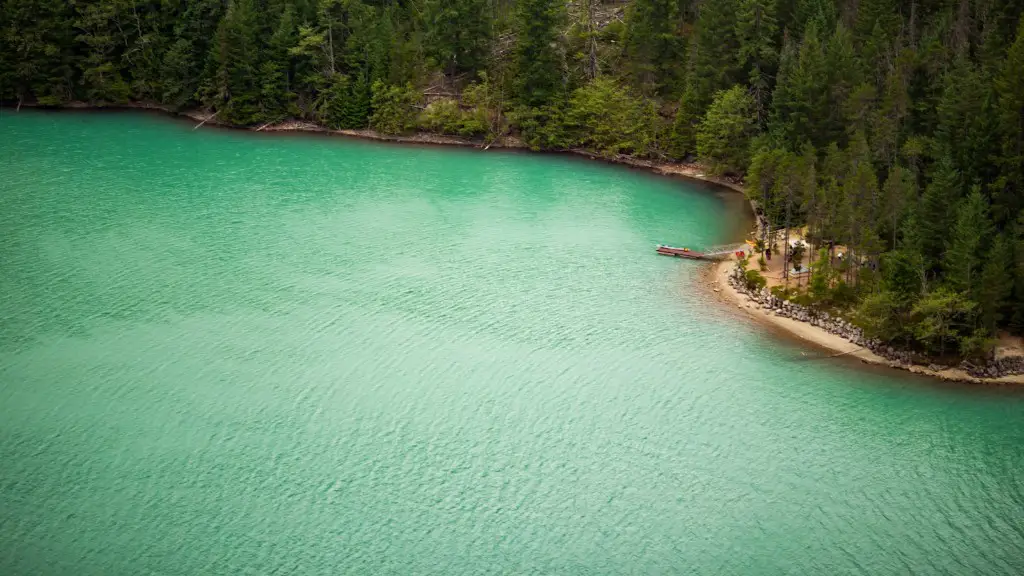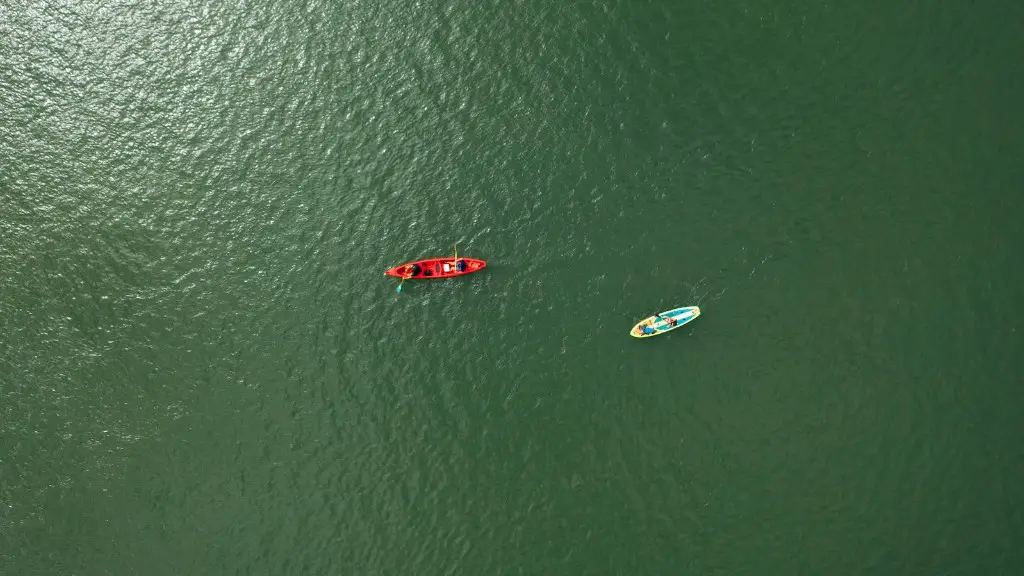In the Great Lakes region of North America, there is no shortage of salmon to be found. Lake Huron, which is the fifth-largest freshwater lake in the world, provides freshwater fishing enthusiasts with an excellent opportunity to catch salmon. There are several different ways to catch these mighty fish, and although success can be hit and miss, with a little bit of knowledge, you can make sure that you get the most out of your time spent fishing in Lake Huron.
When it comes to catching salmon in Lake Huron, the most effective method is trolling. Trolling involves dragging lures or live bait behind a moving boat, and it is an effective technique used by anglers all over the Great Lakes region. You can purchase your own lures or live bait, or choose to hire a professional charter service that can provide you with all of the necessary equipment as well as experienced fishing guides who know the best locations to catch salmon in Lake Huron.
In addition to trolling, another popular and effective fishing technique used in Lake Huron is casting. Casting involves using a rod and reel to cast lures or baits in the water. This is a more labour-intensive method and can be more difficult to master than trolling, but once you have it down, it can be a great way to target salmon in Lake Huron. Many anglers recommend using baits such as live minnows, worms, or spoons, as well as artificial lures like spinners and stickbaits, and the key is to experiment to find what works best in a given situation.
The best time to fish for salmon in Lake Huron is during the late spring and summer months, when water temperatures are at their warmest and salmon are most active. Many anglers also prefer to fish during the early morning or late evening hours, when salmon are most likely to be found in shallow, nearshore areas. It is also important to pay attention to the weather and wind conditions in the lake as these can greatly affect the fishing; in rough conditions, it is usually much easier to target salmon in deeper waters.
In addition to the perfect timing and location, the bait you choose to use is also crucial when trying to catch salmon in Lake Huron. It is best to match the bait you are using to the type of salmon you are targeting, and always use the freshest bait you can get your hands on. The colour, size, and action of the bait will also have a significant effect on your chances of success, so it pays to put in a bit of time to research what works best in the lake.
Lastly, it is important to remember that the regulations for fishing in Lake Huron vary from state to state, so always check with the local authorities before heading out on the water. In general, it is illegal to take salmon from the lake if they are under the legal size, so be sure to know the regulations in your area and be sure to practice catch and release if you are fishing for sport.
Equipment Needed
In addition to the right timing, bait and location, there is also the right kind of equipment that you will need in order to successfully catch salmon in Lake Huron. Fishing rods and reels, lures and bait, and a boat all make up the basics, but depending on the kind of fishing you are doing and the depths you intend to fish in, you may need additional specialized gear such as downriggers and trolling boards. It is also important to have the right safety equipment and an up-to-date marine chart.
Having the right gear and being properly prepared is essential to successfully catching salmon in Lake Huron. By investing in quality equipment and doing your research, you can set yourself up for a successful and enjoyable day of fishing. With the right technique, bait and timing, you can have a memorable experience out on the water and a good chance of bringing in some interesting catches.
Where To Find Salmon
With so much shoreline and so many different habitats, Lake Huron provides many great places to look for salmon. Some of the most popular spots in the lake include the Saginaw Bay, Grand Traverse Bay, and Georgian Bay. Here, salmon can be found nearshore in shallow, gritty waters during the hottest months of summer and near the mouths of rivers and streams throughout the lake as they seek out areas with current and flow. Along the Canadian shoreline of Georgian Bay, anglers will also find good numbers of salmon in the deeper waters, where many of them congregate near submerged reefs and other natural structures.
Although some of the locations mentioned above are known as prime salmon hotspots, salmon can be caught almost anywhere in Lake Huron. In addition to trolling and casting, anglers may also be able to find success fishing with jigs, plastics, spinners, and spoons. Experiment with different techniques and lures to find the best method for catching salmon in the lake. With a little bit of effort, luck, and patience, you can have a great day of fishing with plenty of exciting catches.
Using The Right Techniques
Once you have the right gear, bait and location, the next step is to make sure that you are using the right techniques to catch salmon in Lake Huron. Trolling and casting are two of the most effective methods for targeting salmon in the lake, but each technique requires specialized knowledge and experience to be successful. Trolling requires the angler to use a moving boat and the right type of lures or bait in the lake, and the technique is most effective in deeper waters. Casting, on the other hand, involves casting a light lure or bait from a stationary boat, and it is generally used in shallow and nearshore areas, where salmon can be spotted in the shallows.
In either case, the key is to experiment and find the most effective technique for the situation. Different types of lures and baits will work better in certain areas and all of these factors should be taken into account when targeting salmon in Lake Huron. If you can find the right spot and use the right technique, you should be able to maximize your success.
Using Live Bait
Although trolling and casting with artificial lures and baits can be effective in many situations, live bait can also be a successful option when it comes to catching salmon in Lake Huron. Live bait such as minnows, worms, and shrimp can be used in a variety of ways to target salmon, including drift fishing, bobber fishing, trolling, and casting. Live bait has the added benefit of being more attractive to the fish, and if you can use the right bait in the right location, you should be able to put yourself in a better position to succeed.
One way to increase your success with live bait is to use the bait in combination with a light jig or spoon. This is a great way to target salmon that might be hiding in deeper waters, as the spoon will help to attract attention from fish in the area. Additionally, adding a scent to the live bait can also help to create a more attractive proposition, and many anglers recommend using products that contain fish oil or anise extract.
What To Expect
When fishing for salmon in Lake Huron, it is important to manage your expectations. Although there is a good chance of catching salmon in the lake, the numbers and sizes of the fish can vary greatly depending on the time of year and the conditions of the lake. Understanding these variables and paying attention to your surroundings can help you to increase your chances of success, but it is important to remember that nothing is ever guaranteed when it comes to fishing.
However, if you are able to locate the fish and use the right technique and bait, the rewards can be great. Lake Huron provides a great opportunity for fishermen to target a variety of species including salmon, trout, bass, and walleye. With a bit of luck and some patience, you should be able to get plenty of exciting catches to take home with you.
Tips For Beginners
For those just beginning to fish for salmon in Lake Huron, it is important to start with simple and easily achievable goals. Focus on learning how to properly use your gear, understanding the different regulations and restrictions, and familiarizing yourself with the types of lures and bait that are most effective in the lake. Start by targeting salmon in shallow, nearshore areas where they can be easily spotted and targeted with a lighter-weight gear. Once you’ve got the basics down and become more comfortable on the water, you can move on to more challenging and rewarding fishing trips.
It can also be helpful to join local fishing clubs or guides that can provide valuable knowledge and experience. By joining an experienced group, you can meet other anglers who have been fishing in the lake for years and learn the best spots, techniques and tips for success. Having a good group of mentors can make all the difference in making your fishing experience both successful and enjoyable.
Taking Care Of Your Catch
Finally, when fishing for salmon in Lake Huron it is important to remember to take care of the fish you catch. Not only is catch and release an important practice for preserving the health of the lake, but it is also important to practice proper handling techniques in order to preserve the quality of the fish. This includes handling the fish as gently as possible and keeping them in the water for as long as possible. Additionally, it’s important to keep the gear you’re using clean and in good condition, as this will help to ensure that your catches are of the highest quality.
By following these tips and remembering the importance of conservation, anglers will be able to get the most out of their time spent fishing for salmon in Lake Huron. With the right gear, bait and technique, anglers can expect a great day of fishing with plenty of interesting catches to take home.
